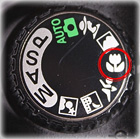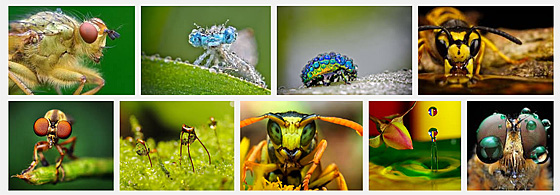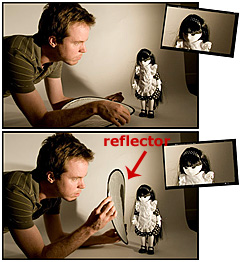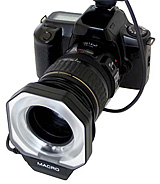Macro photography tips -
how to take better macro photos
If you have read my introduction on macro photography you're half-way towards taking great close up photos.
Here's some macro photography tips to help you capture some great close up photos.
There are three things that you'll need for macro photography ...
And you probably have all three things
Most of them are obvious, but here's a list:- A camera with a macro setting
- A suitable subject
- Decent light
A camera with a macro setting
It's quite likely your camera has a macro setting - most do. But sometimes it's called something else like, maybe, "close up".The thing to look for is an icon of a tulip.

I've no idea why they always choose a tulip, but they do, and that's what you need. Have a look at the icon here - circled in red.
Setting this feature makes the lens elements (and there are a number of separate lens elements in a camera's lens) move into a particular configuration.
It's this special configuration that allows the camera to focus on something very close up.
So the first macro photography tip would be to set the correct setting on your camera.
All set? find a suitable subject
As I mentioned on my what is macro photography page, the classic subjects for macro photography seem to be insects and flowers.Try going to Google and doing an image search for "macro photography". The snapshot below is the first few results from Google. See what I mean!

And, if you think about it, the reason is obvious - macro photography is close up photography, and there aren't that many interesting things to photograph close up.
... or are there?
Actually, there's a lot of macro photography material in much of what surrounds us
Leaving aside the insects and flowers, how about:- the grain on wood
- close up of stones/pebbles
- water droplets
- toy cars (surprisingly satisfying to photograph!)
- printed text
So, second macro photography tip - find a suitable subject; and allow yourself to be creative!
Once you've found your subject, you need to consider the final key element...
Good lighting
Good light is essential for macro photography.Ideally, you need bright conditions, and even light. Which is not always easy to come by!
But here's a useful macro photography tip - use a reflector.

A reflector is a flexible piece of material that bounces light back onto the subject.
If the light is coming from the right, hold your reflector to the left of the subject in order to 'bounce' light back onto the left side.
Have a look at the example shown here - the reflector is used to bounce light onto the left side of the doll, in order to give the doll more even illumination.
If you're a digital SLR owner you can buy something called a ring flash.
This is a special flash that surrounds the lens of your camera. When it fires it gives very even lighting.

If using a ring flash, remember to turn the power output down - you'll be photographing something very close up and if the flash is too bright it will overwhelm the subject.
So, macro photography tip number three - good lighting!
An extra macro photography tip...
... is to use a tripod, or at least steady the camera on something very solid.The reason for this is that, when you focus on a subject close up, you will have very limited depth of field.
This means that only a small part of your subject will be in focus.
Anything in front of your subject, and anything behind your subject will be out of focus. And the bit that is actually in focus will be very small - perhaps only a few millimetres.
This means that, if you move your camera just a few millimetres as you press the shutter button, your subject might move out of focus.
Hence the need to either keep your camera very steady, or use a tripod.
By the way, this works for your subject too.
Suppose your subject is an insect, and you focus nicely on it, and then it walks off just as you're pressing the shutter, it may well walk out of focus!
